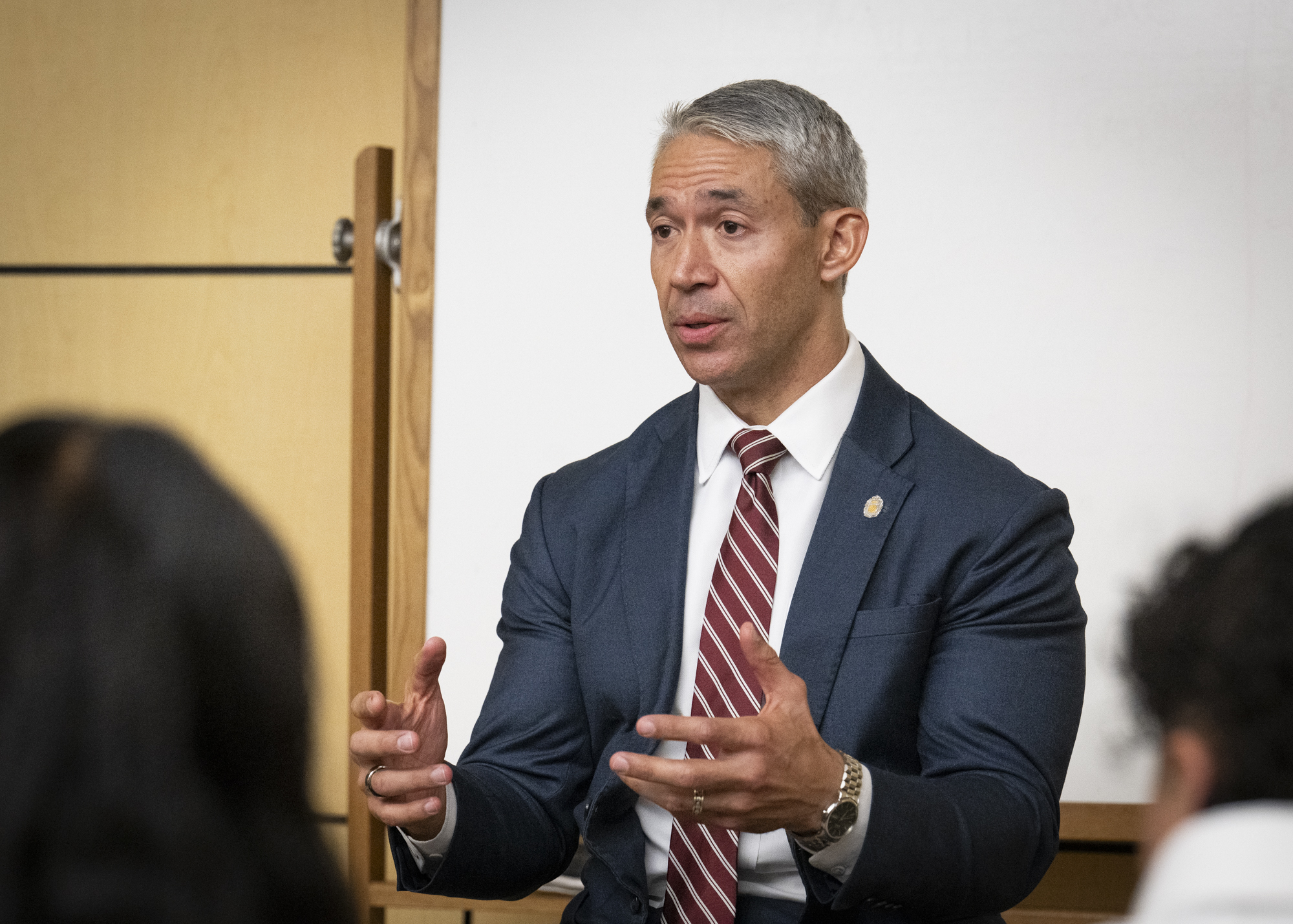When author Ānua Reyes first set out to discover their ancestral roots, they traced their family lineage to the Coahuiltecan Indians, who lived as hundreds of small, autonomous, hunter-gatherer groups in the coastal plains of northeastern Mexico and southern Texas from the 1500s to the 1700s and were united by a common language.
Reyes, an archivist and researcher with American Indians in Texas at the Spanish Colonial Missions, spoke at San Antonio College Nov. 2 for a Native American Heritage Month event. Reyes discussed the history and legacy of their people and their efforts to reclaim their Indigenous identity and revitalize Coahuiltecan culture and language.
As a native San Antonian, Reyes was born in the area their ancestors called Yanaguana, or Land of the Spirit Waters. Their great grandmother, Zeferina Reyes, died of tuberculosis in 1870 and wasn’t able to raise her child — Ānua’s grandfather. After Maria’s death, the family’s ties to the Indigenous people in Yanaguana were lost.

“I feel my ancestors have guided me to this place,” Reyes said. “I was born in Yanaguana. I come from Yanaguana, and my people come from Yanaguana. This is who I am.”
By the early 1800s, most Coahuiltecan Indians were absorbed into the Mexican identity due to missionization. Many tribal communities retain Coahuiltecan ties, including Tāp Pīlam Coahuiltecan, Mikan Garza, Carrizo Comecrudo, and Karankawa kin on the coast.
Reyes said the best information on Coahuiltecan-speaking groups comes from two missionaries: Damián Massanet and Bartolomé García. On Massanet’s 1691 journey, he noted that a single language was spoken throughout the area he traveled.
“We have to teach as many youth as we can. We have to remember to keep their legacy going.”
— Ānua Reyes
The language, Pajalate, united the various groups of Coahuiltecan people, and Reyes is dedicated to reclaiming and revitalizing the Pajalate language, which has been lost since the 18th century.
“I want to make the Pajalate language tangible to those in our community,” Reyes said. “That is my pursuit.”
Reyes, who is partially deaf in their left ear, also researches and is passionate about Native American Sign Language — the “Hand Talk” language that Native Americans used long before American Sign Language was developed.
Reyes aspires to write a book that introduces young people to Coahuiltecan philosophies and traditions, Pajalate, and Native American Sign Language. Reyes wants children to discover who they are culturally and spiritually.
“We have to teach as many youth as we can,” Reyes said. “We have to remember to keep their legacy going. How do we teach our youth these languages?”
Dr. Lisa Ramos, associate professor of History and Mexican-American Studies at SAC attended the presentation and expressed her appreciation for Reyes’ work.

“You deserve a MacArthur [Fellowship],” Ramos told Reyes. “Most of what I was taught was a very dominant narrative about Europeans bringing civilizations. You rarely hear these perspectives that focus on Indigenous groups and Mexican Americans. You’ve taught me that I have so much yet to unlearn. Your words and knowledge have a deep impact on us.”
Reyes holds a bachelor’s in Indigenous Politics and will soon complete their masters in Indigenous Politics from the University of Hawai’i. Reyes plans to pursue a doctoral degree somewhere on Coahuiltecan lands with a focus on Native American Sign Language and Indigenous Politics.
Reyes believes their work to revitalize and preserve their people’s spiritual ties to the region is sacred, and as long as people use the Pajalate language, the spirit of Yanaguana exists in the lands their ancestors inhabited.
“They wanted all of you here that are on their lands to speak it,” Reyes said. “If that is the case demonstrated by my ancestors, that’s what I’m going to set in line and do.”





